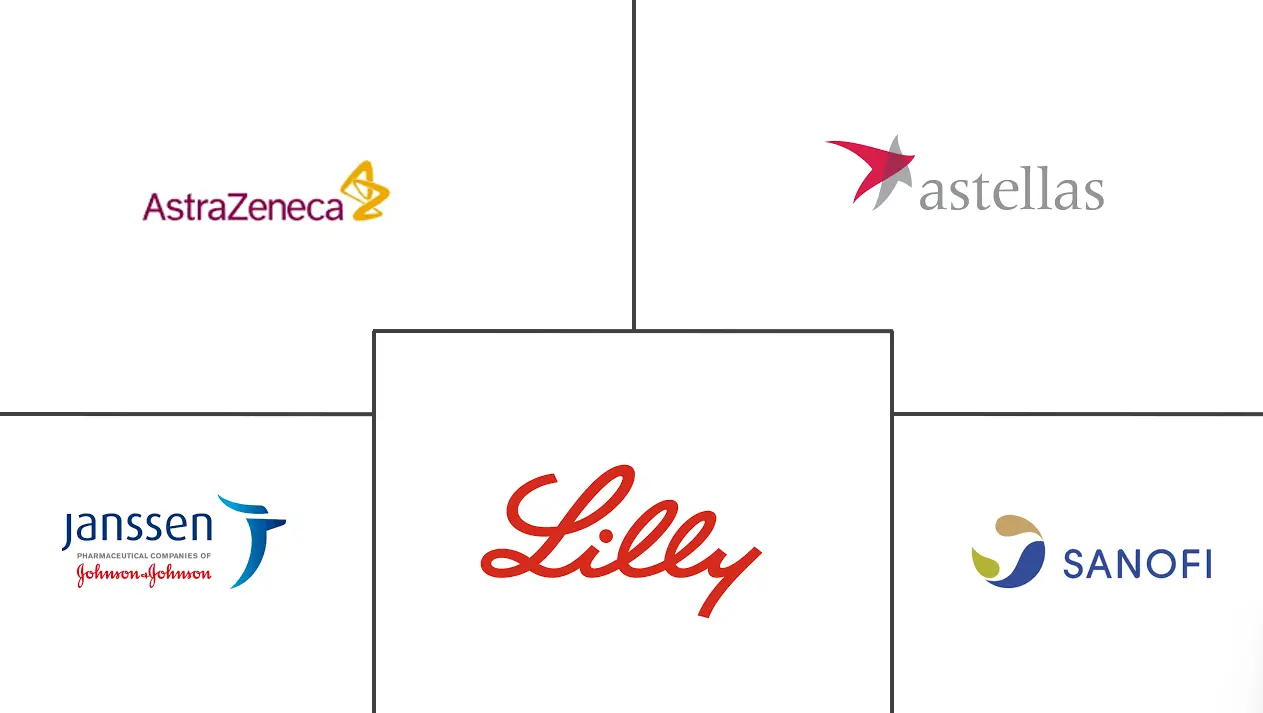South Korea Oral Anti-Diabetic Drug Market Size and Share
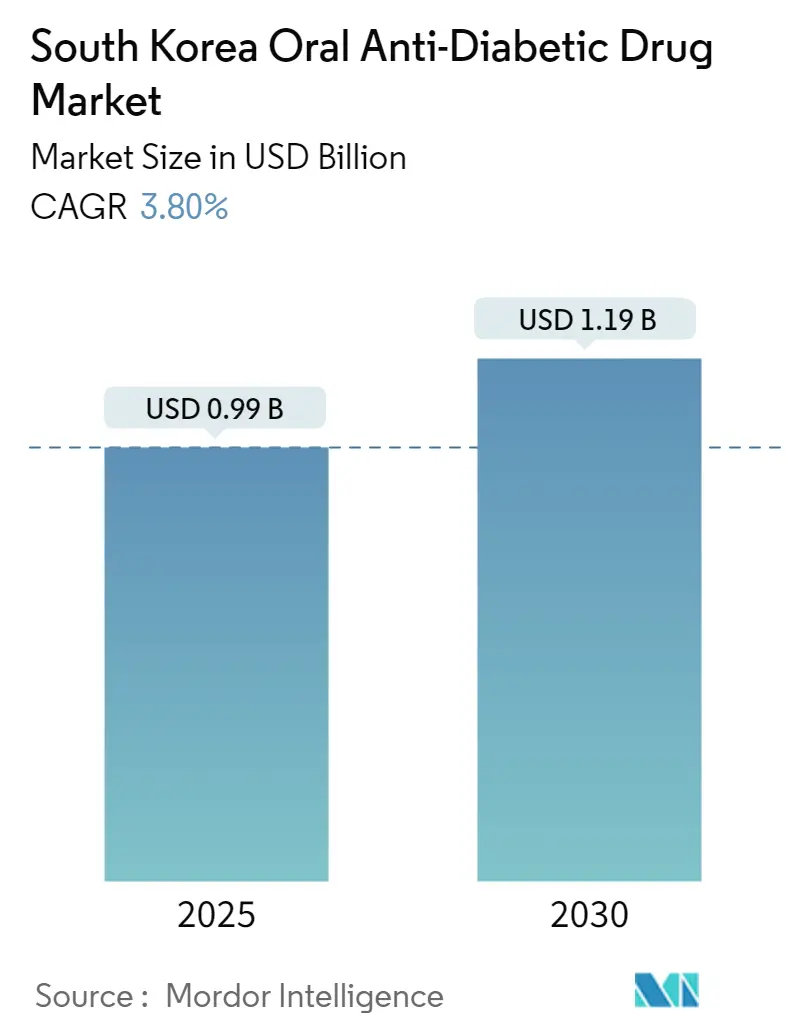
South Korea Oral Anti-Diabetic Drug Market Analysis by Mordor Intelligence
The South Korea Oral Anti-Diabetic Drug Market size is estimated at USD 0.99 billion in 2025, and is expected to reach USD 1.19 billion by 2030, at a CAGR of 3.8% during the forecast period (2025-2030).
The South Korean market for oral anti-diabetes drugs is poised for growth during the forecast period. This growth can be attributed to a rising diabetes burden, bolstered by government initiatives and heightened awareness campaigns in South Korea. The increasing prevalence of diabetes has led to a greater demand for effective oral anti-diabetes medications. Government initiatives like public health programs and subsidies aim to improve diabetes management and treatment accessibility. Additionally, awareness activities, including educational campaigns and community outreach, enhance public knowledge about diabetes prevention and control.
For instance, according to the article published in the Korean Journal of International Medicine in January 2023, South Korea recorded approximately 3.7 million diabetes cases in 2022, marking a notable 22% surge from the previous year. This increase highlights a significant rise in the prevalence of diabetes over the four years. Notably, males accounted for 55.8% of the diabetic population in that year, indicating a higher incidence of diabetes among men compared to women. Thus, the high burden of diabetes in the country is expected to increase demand for oral anti-diabetes drugs during the forecast period.
Diabetes is more prevalent among adults in South Korea, and the economic cost of diabetes is more than that of general cancer. Diabetes problems or related comorbidities, as well as hospitalization, have considerable expenditures. Effective techniques are required to control diabetes complications, use healthcare resources, and decrease the financial burden. Increased knowledge of the scale and particular components of the economic burden of diabetes in Korea will likely persuade health officials to prioritize its prevention and management and commit more healthcare resources to diabetes.
The strategic activities of the market players, such as product launches, mergers, and acquisitions, are expected to contribute to market growth during the forecast period. For instance, in May 2022, Mounjaro (tirzepatide) injection to improve blood sugar control in adults with type 2 diabetes was approved as an addition to diet and exercise. Mounjaro was effective at improving blood sugar and was more effective than the other diabetes therapies with which it was compared in clinical studies.
Similarly, in June 2022, Daewoong Pharmaceutical confirmed promising phase 3 topline results focusing on the therapeutic effects of Enavogliflozin monotherapy and combination therapy with metformin. Daewoong's Enavogliflozin is an SGLT-2 inhibitor in development for the first time in Korea.
Therefore, owing to the above factors, the market is anticipated to grow during the forecast period.
South Korea Oral Anti-Diabetic Drug Market Trends and Insights
The Metformin Segment Has Occupied the Highest Market Share in the South Korean Oral Anti-diabetic Drugs Market in the Current Year
In terms of revenue, the metformin segment is anticipated to lead the South Korean oral anti-diabetic drugs market with an annual growth rate of over 1% during the forecast period. Among the several oral anti-diabetes drugs available, metformin constitutes one of the key pharmacotherapeutic agents in the management of T2DM. Diabetes is a major health issue that poses considerable problems to healthcare systems in South Korea.
The prevalence of recognized type 1 and type 2 diabetes in the South Korean adult population is relatively high, with many individuals still undiagnosed. The prevalence of type 2 diabetes is expected to rise steadily over the next few years due to an aging population and an unhealthy lifestyle (the percentage of energy intake from carbohydrates is higher in diabetes patients than in those without diabetes, while that from protein and fat is lower in diabetics). High-quality treatment, including proper monitoring, risk factor reduction, and active self-management, is critical for avoiding complications in type 2 diabetes patients in South Korea.
All public health insurance in Korea is covered under the National Health Insurance Act. This act applies to the whole population, and all Korean nationals earning a living must contribute a portion of their monthly earnings. Employers are also obligated to match employee contributions. The MOHW oversees two health insurance agencies: the Health Insurance Review Agency (HIRA) and the National Health Insurance Corporation (NHIC). The HIRA, in particular, is in charge of examining reimbursement coverage or non-coverage, as well as price applications from pharmaceutical and medical drugs companies. The company can extend its market and increase its sales volume if it receives payment.
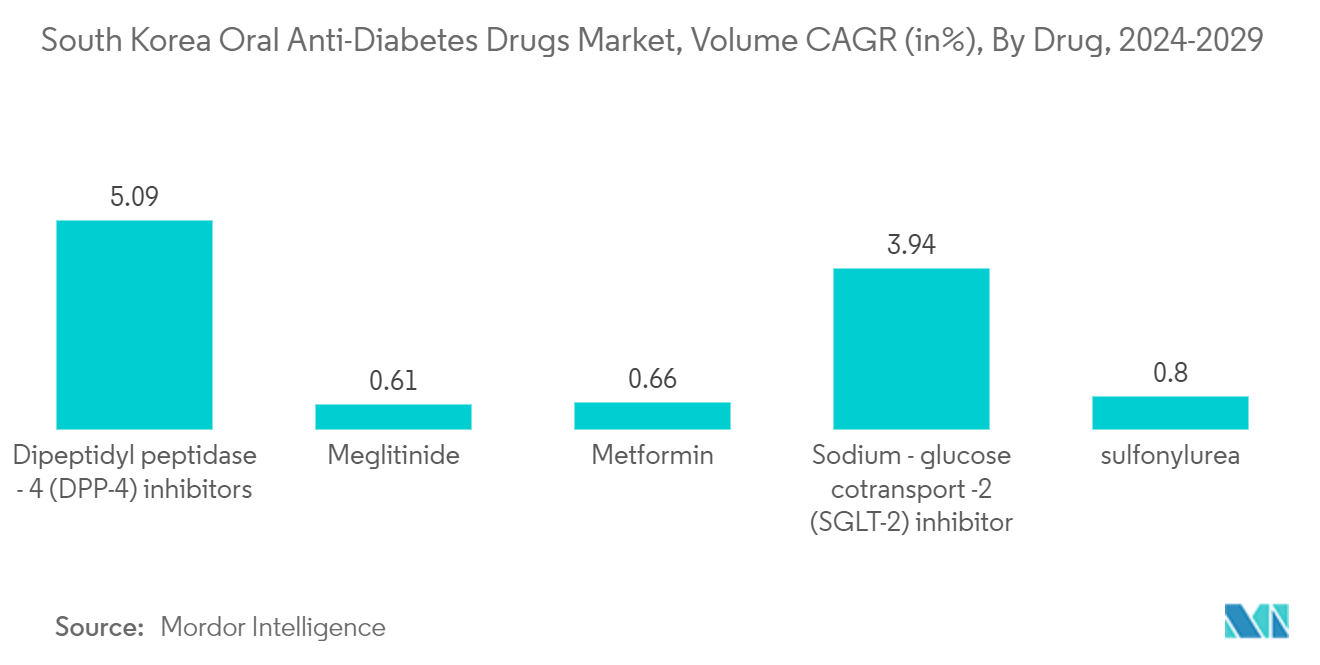
The Increasing Diabetes Population in South Korea is Driving the Market
Diabetes is more prevalent among adults in South Korea, and the economic cost of diabetes is more than that of general cancer. Diabetes problems or related comorbidities, as well as hospitalization, have considerable expenditures. Effective techniques are required to control diabetes complications, use healthcare resources, and decrease the financial burden. Increased knowledge of the scale and particular components of the economic burden of diabetes in Korea will likely persuade health officials to prioritize its prevention and management and commit more healthcare resources to diabetes.
Diabetic pharmaceuticals are medications designed to stabilize and manage blood glucose levels in people with diabetes. Diabetes medications are routinely used to control the disease. Diabetes medications are classified into several types. Each drug class has a unique method of lowering blood sugar. A medication may function by stimulating the pancreas to produce and release more insulin, reducing the liver's capacity to produce and release sugar, inhibiting the action of intestinal enzymes that break down carbs, and many other mechanisms. It also raises cell sensitivity to insulin, decreasing the kidneys' capacity to absorb sugar and increasing the quantity of sugar excreted in the urine. The prevalence of recognized type 1 and type 2 diabetes in the adult South Korean population is significant, as is the number of individuals who have not yet been diagnosed. The prevalence of type 2 diabetes is expected to rise steadily over the next few years due to an aging population and an unhealthy lifestyle (the percentage of energy intake from carbohydrates is higher in diabetes patients than in those without diabetes, while that from protein and fat is lower). High-quality treatment, including proper monitoring, risk factor reduction, and active self-management, is critical for reducing complications in type 2 diabetes patients.
For the aforementioned reasons, the market is expected to increase during the forecast period.
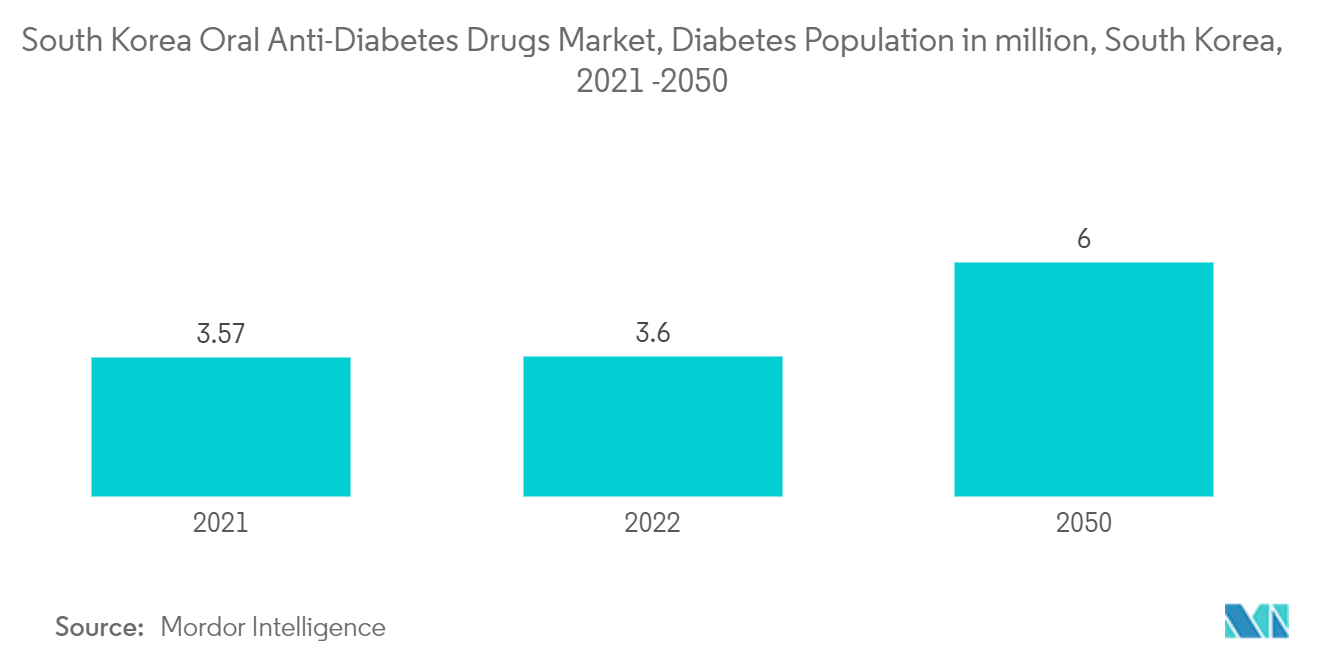
Competitive Landscape
The South Korean oral anti-diabetes drug market is consolidated, with a few major manufacturers like Eli Lilly, AstraZeneca, Sanofi, and Janssen Pharmaceuticals having a global market presence, while the remaining manufacturers are confined to the other local or regional markets. Companies are focusing on innovations in diabetes drugs.
South Korea Oral Anti-Diabetic Drug Industry Leaders
Eli Lilly and Company
Astellas
Sanofi
Janseen
Astrazeneca
- *Disclaimer: Major Players sorted in no particular order
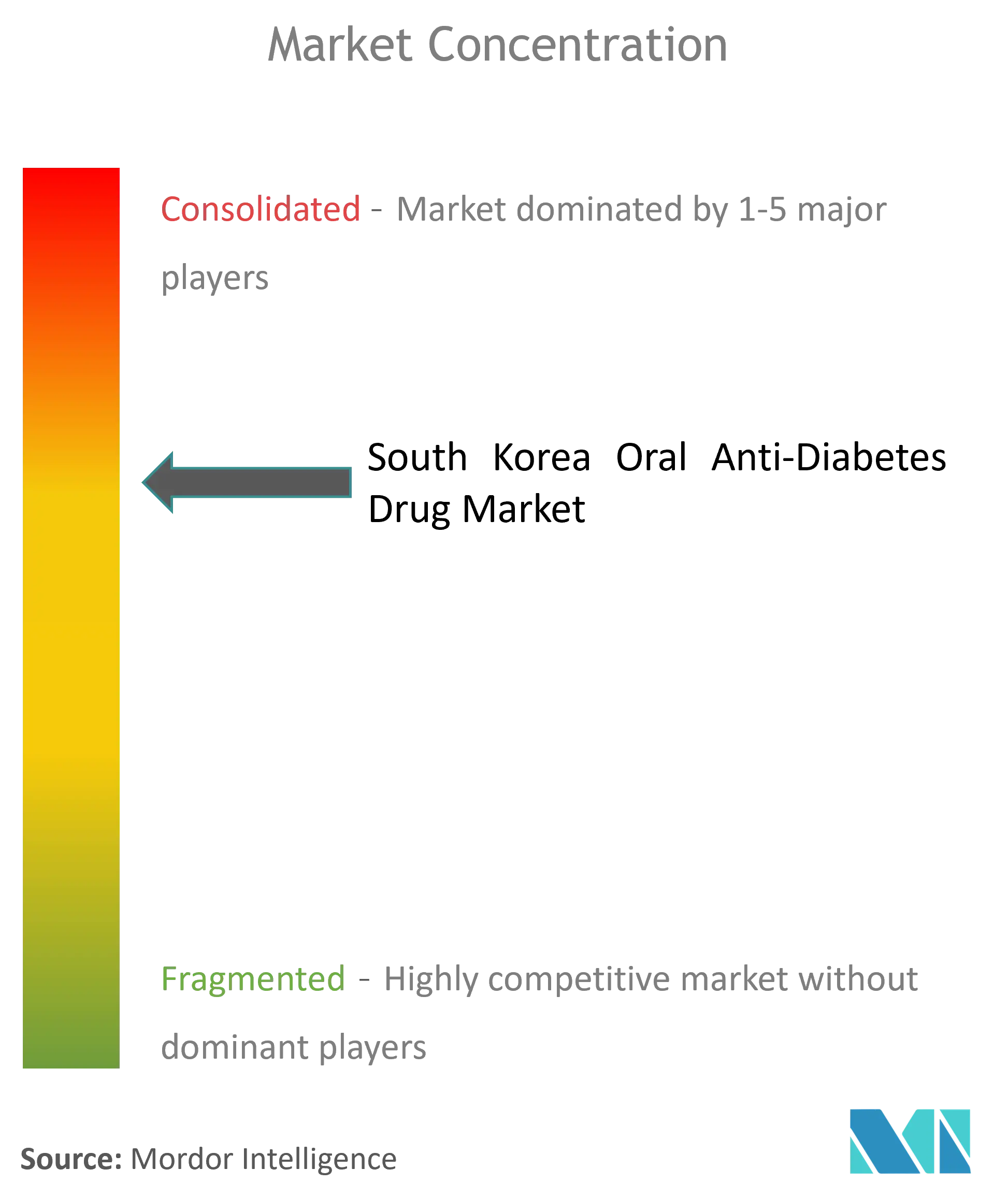
Recent Industry Developments
- May 2024: Biocon Limited announced an exclusive licensing and supply agreement with Handok, a specialty pharmaceutical company in South Korea. This agreement aims to commercialize Biocon's complex drug product, Synthetic Liraglutide, highlighting its vertically integrated approach.
- December 2023: AstraZeneca Korea announced its decision to cease the distribution of Forxiga (dapagliflozin), a monotherapy for diabetes that inhibits the sodium-glucose transport protein 2 (SGLT-2), in Korea. This change was expected to take effect in the first half of 2024.
South Korea Oral Anti-Diabetic Drug Market Report Scope
Orally administered antihyperglycemic drugs reduce blood glucose levels. They are often used in type 2 diabetes care. The South Korean oral anti-diabetic drug market is segmented into drugs biguanides, alpha-glucosidase inhibitors, dopamine-D2 receptor agonists, sodium-glucose cotransport-2 (SGLT-2) inhibitors, dipeptidyl peptidase-4 (DPP-4) inhibitors, sulfonylureas, and meglitinides. The report offers the value (USD) and volume (units) for the above segments.
| Biguanides | Metformin |
| Alpha-glucosidase Inhibitors | Alpha-glucosidase Inhibitors |
| Dopamine D2 Receptor Agonist | Bromocriptin |
| SGLT-2 Inhibitors | Invokana (Canagliflozin) |
| Jardiance (Empagliflozin) | |
| Farxiga/Forxiga (Dapagliflozin) | |
| Suglat (Ipragliflozin) | |
| DPP-4 Inhibitors | Onglyza (Saxagliptin) |
| Tradjenta (Linagliptin) | |
| Vipidia/Nesina(Alogliptin) | |
| Galvus (Vildagliptin) | |
| Sulfonylureas | Sulfonylureas |
| Meglitinides | Meglitinides |
| Oral Anti-diabetic Drugs | Biguanides | Metformin |
| Alpha-glucosidase Inhibitors | Alpha-glucosidase Inhibitors | |
| Dopamine D2 Receptor Agonist | Bromocriptin | |
| SGLT-2 Inhibitors | Invokana (Canagliflozin) | |
| Jardiance (Empagliflozin) | ||
| Farxiga/Forxiga (Dapagliflozin) | ||
| Suglat (Ipragliflozin) | ||
| DPP-4 Inhibitors | Onglyza (Saxagliptin) | |
| Tradjenta (Linagliptin) | ||
| Vipidia/Nesina(Alogliptin) | ||
| Galvus (Vildagliptin) | ||
| Sulfonylureas | Sulfonylureas | |
| Meglitinides | Meglitinides | |
Key Questions Answered in the Report
How big is the South Korea Oral Anti-Diabetic Drug Market?
The South Korea Oral Anti-Diabetic Drug Market size is expected to reach USD 0.99 billion in 2025 and grow at a CAGR of 3.80% to reach USD 1.19 billion by 2030.
What is the current South Korea Oral Anti-Diabetic Drug Market size?
In 2025, the South Korea Oral Anti-Diabetic Drug Market size is expected to reach USD 0.99 billion.
Who are the key players in South Korea Oral Anti-Diabetic Drug Market?
Eli Lilly and Company, Astellas, Sanofi, Janseen and Astrazeneca are the major companies operating in the South Korea Oral Anti-Diabetic Drug Market.
What years does this South Korea Oral Anti-Diabetic Drug Market cover, and what was the market size in 2024?
In 2024, the South Korea Oral Anti-Diabetic Drug Market size was estimated at USD 0.95 billion. The report covers the South Korea Oral Anti-Diabetic Drug Market historical market size for years: 2019, 2020, 2021, 2022, 2023 and 2024. The report also forecasts the South Korea Oral Anti-Diabetic Drug Market size for years: 2025, 2026, 2027, 2028, 2029 and 2030.
Page last updated on:
South Korea Oral Anti-Diabetic Drug Market Report
Statistics for the 2025 South Korea Oral Anti-Diabetic Drug market share, size and revenue growth rate, created by Mordor Intelligence™ Industry Reports. South Korea Oral Anti-Diabetic Drug analysis includes a market forecast outlook for 2025 to 2030 and historical overview. Get a sample of this industry analysis as a free report PDF download.
